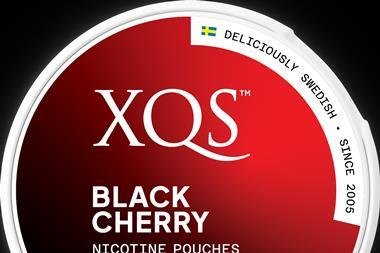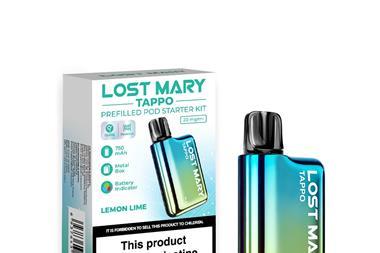Another year, another set of new regulations regarding the sale of tobacco. The latest came into play on January 1, with regard to tar, nicotine and carbon monoxide levels. The maximum level for tar content is now 10mg, for nicotine it is 1mg and for carbon monoxide 10mg.
The tobacco manufacturers have been selling in these new packs for some time but retailers should be alert, in case they have an odd box or two kicking around in a store room. The easy way to tell if the cigarettes are okay is if the outer wrap has a white box and the duty paid fiscal mark on them. Later in the year, retailers are likely to have new point of sale regulations to contend with. The draft point of sale regulations for cigarette and tobacco were published last autumn but the earliest any changes could come into effect is September this year. The message from the Tobacco Manufacturers Association (TMA) to retailers is not to panic and to be aware that tobacco companies will keep them abreast of the progress of the draft regulations.
The proposals are designed to limit the amount of advertising at the point of sale while continuing to give consumers information about the products and their prices, so they can make an informed purchase. However, the regulations are far more restrictive than anticipated and the TMA says they will be difficult to implement.
The draft regulations would permit only one A5 size advertisement per outlet no matter how many gantries or display units are located on the premises. And 30 per cent of the ad must be a health warning. In addition, either a price list (also A5 in size) or price indications may be displayed.
The TMA’s chief executive Tim Lord comments: “We are disappointed at the degree of restrictions. The space allowed for advertising tobacco products on sale together with their price is so small and limited to only one display unit in each retail outlet that it will not be possible to meet the objective of giving consumers all the information they need before deciding to buy. Given the number of tobacco products on sale, it is going to be very difficult to squeeze the information into the available space. Apart from anything else, the information may well be too small to read at a distance.”
Although we don’t yet know if the draft regulations on point of sale advertising are coming into effect in September, we do know there will be legislative changes regarding handrolling and pipe tobacco and cigars. Like cigarettes last year, packs of these products will have to display the new health warnings from September 29, 2004. These are the large ‘in your face’ warnings and retailers found selling packs carrying the older, smaller warnings after this date could be fined for doing so.
As for the so-called ‘dark’ market – a market where all tobacco advertising is banned – the manufacturers say it’s too early to tell what effect that has had on sales. Gallaher’s trade communications manager Jeremy Blackburn says: “Sales of certain tobacco products are cyclical and seasonal and as we haven’t had a full year of a dark market, it’s difficult to measure any effect. However, the market is down five per cent but we’re putting that down to the rise in the personal allowance for people bringing cigarettes back from the Continent. We’ll have had a full year’s trading in the dark market in May so we will be able to tell then.”
Blackburn says the good thing about brands such as Benson & Hedges is that they are household names. Any new name entering the market will find it hard to gain that sort of recognition.
Imperial’s trade communications specialist Iain Watkins says: “Close collaboration between us, the wholesalers and retailers was vital to ensure trading throughout the transitional period remained largely unaffected.” Watkins adds that it must be remembered that despite the advertising ban, tobacco manufacturers can still communicate fully with retailers on a business-to-business basis.
FORECOURT SALES
The forecourt remains an important retail channel for the UK tobacco industry, with around 12 per cent of all cigarettes sold through forecourts. Out of a total market worth £12.3bn that equates to sales worth £1.3bn going through forecourts.
Tobacco traditionally has less than two metres of wall space, but delivers on average about a third of a forecourt shop’s turnover. Smokers also spend more in forecourts than non-smokers, making them important customers.
Forecourts account for around 17 per cent of premium cigarette sales in the UK, although sales of ultra-low priced cigarettes are growing quicker in forecourts than any other price sector, says Imperial’s Iain Watkins.
Gallaher’s Jeremy Blackburn says Benson & Hedges perform particularly well in forecourts. “B&H has a 13.7 per cent share of sales in forecourts against a national average of 8.5 per cent. Similarly Silk Cut has a 7.3 per cent share in forecourts against a national average of 6.1 per cent.”
He adds that 10s packs also sell well in forecourts, accounting for 24.5 per cent of sales against a national average of 19.5 per cent. “There’s definitely a market for 10s in forecourts, particularly premium 10s. But unfortunately 10s is one area where forecourts do tend to go out of stock.
“A problem we’ve encountered is that the manager of the site disappears over the weekend, taking the keys for the stock cupboard with him or her. The 10s packs run out and the staff are in no position to restock. There’s also the fact that not enough space is given to 10s on the gantry in the first place.”
OUT OF STOCK
Avoiding out-of-stock situations is essential. Imperial Tobacco’s research found that 49 per cent of smokers will leave a store if their brand is not in stock. And often you don’t just lose that tobacco sale, you lose out on purchases of many other goods and you might lose that person’s custom altogether.
Imperial Tobacco has calculated that if you lose one Lambert & Butler smoker from your forecourt, then you lose £2,315 of sales over a year. That figure is calculated as follows: a packet of L&B, costing £4.13 six days out of seven plus £3.29 spent on each of those six days on other goods. This adds to £44.52 a week, which over a year adds to £2,315.
Many forecourt customers will be transient, visiting the outlet for the first and possibly the only time. This means it’s essential that forecourt retailers stock the brands that smokers will be actively looking for when they see the tobacco unit, such as Lambert & Butler. “Lambert & Butler King Size is the best selling cigarette in forecourts with a share of over 14 per cent. This reflects the consumer’s increased propensity to search out quality cigarettes that also offer great value,” says Iain Watkins. And with regard to cigars, Hamlet is the brand smokers will be looking for.
As for your tobacco pricing policy, Gallaher’s Jeremy Blackburn says it depends on your forecourt’s location. “Retailers are entitled to premium-priced cigarettes because what we give them is a recommended retail price. If your location means you get a lot of one-off customers passing through then it might be okay to premium price. However if you are in a village or neighbourhood environment with a lot of regular customers then your pricing will have to be competitive. Really pricing has to suit your marketplace.”
Forecourts over-trade in products like premium cigarettes – meaning they sell more than the national average – but they under-trade in certain areas too. A case in point is Amber Leaf handrolling tobacco. It accounts for 10.4 per cent of sales in forecourts against a national average of 15.9 per cent. “There’s a real opportunity within forecourts for Amber Leaf. The 12.5g flip-top packs are a great starter pack but there’s an opportunity for upweighted purchases that are more profitable to retailers,” says Blackburn. He is, of course, alluding to the 25g pouch which he reckons could become a big seller in forecourts.
Roll your own (RYO) tobacco is enjoying strong sales growth as smokers see it as a more economical option. As such the typical RYO smoker is harder to define these days, with many more women now choosing to roll their own cigarettes. At the same time, the average age of adult RYO smokers is falling as it becomes more socially acceptable for young adult cigarette smokers to ‘dual’ with RYO.
Iain Watkins says this ‘dualist’ trend has seen the number of RYO smokers in the UK grow to 5.5 million. Over 47 per cent of all RYO tobacco sold is Golden Virginia. Meanwhile, Drum, the world’s biggest-selling RYO tobacco, has strengthened its UK market share and now accounts for over 14 per cent of sales. Rizla is the most popular brand of rolling paper with a market share of more than 80 per cent.
Despite all the changes ahead for the tobacco industry the message to forecourt retailers is a simple one. There are some 15 million adult smokers in the UK who spent £12.5bn on duty-paid products in 2002. They’ve got to buy their smoke of choice somewhere so it’s up to you to make sure that it is your store.

































No comments yet